Win the Room: Turning Pitch Decks into Conversations That Close
The best pitch decks in the world don't just inform—they stick. They create a kind of resonance that lives on long after the last slide clicks by. In a time when attention is scarce and decision fatigue is real, client presentations need more than polish. They need intention, story, and strategy working together so that your audience doesn't just nod along—they remember, and they act. For anyone trying to close deals, build trust, or simply move a conversation forward, knowing how to present is just as vital as knowing what to present.
Lead With the Problem, Not the Product
Too many presentations kick off with self-congratulation: company logos, origin stories, credentials piled onto the first three slides. But nothing earns attention faster than a clearly framed problem that the client sees themselves in. It’s not about agitating pain for the sake of drama—it’s about showing that you understand what keeps your audience up at night. Start by painting the landscape as they see it, using their language and context. Then, and only then, pivot to what you bring to the table. That shift changes the entire tone of a pitch, because now you're not selling something—they're asking for it.
Design for the Room, Not the Slide
Even the sharpest pitch deck will fail if it tries to do all the talking. Slide design isn't about stuffing in every stat, chart, and talking point—it’s about making space for the presenter to lead. A cluttered deck shifts attention to the screen and away from the person in front of it. Clean slides with one core idea each invite conversation, while visuals that amplify—not echo—your words help ideas land deeper. The rule of thumb: if everything’s important, nothing is. Leave room for the narrative to breathe, and for the audience to fill in the gaps with questions.
Let the Tech Handle the Visual Storytelling
Generative AI gives small business owners a powerful way to create custom visuals without needing a designer on speed dial. What sets it apart from predictive or analytical AI is its ability to build something from scratch—turning text prompts into original images, layouts, or slide backgrounds that feel intentional and tailored. It’s not just analyzing data or forecasting behavior; it’s producing creative assets that elevate the entire pitch. For additional information, learn how these tools are becoming go-to resources for entrepreneurs who want to stand out without slowing down.
Use Contrast to Build Momentum
Pacing matters. A deck with 20 slides that all look and feel the same will lull even the most invested client into passivity. Smart presenters structure decks like a well-scored film, using contrast to signal movement. Follow a heavy data slide with a clean, bold quote. Pair a dense insight with a surprising anecdote. Move from tactical to strategic and back again to keep people engaged on multiple levels. It’s not about showmanship—it’s about knowing how humans process change, and giving them just enough tension and release to stay with you.
Prioritize What’s Remembered, Not Just What’s Said
Clients will forget 90% of what was said within a day. That makes the remaining 10% incredibly important. Instead of treating every slide as equal, smart presenters reverse-engineer the takeaway: what do you want them still thinking about tomorrow? Anchor your presentation around those moments—maybe it’s a single unexpected stat, a striking metaphor, or a before-and-after case study that makes the value crystal clear. Repetition helps, but so does surprise. If it’s worth remembering, it’s worth designing a moment around.
Let the Client See Themselves in the Story
Presentations often talk at the client, not with them. But if you can tell a story where they recognize their own ambitions, challenges, and metrics of success, you invite real alignment. Avoid generic use cases and instead tailor examples that speak directly to their industry, their structure, even their language. It’s not about customization for the sake of flattery—it’s about proving you understand their world. When a client says, “That’s exactly what we’ve been dealing with,” the pitch has already done half its job.
A strong pitch isn't a performance—it's a dialogue shaped with care. When every part of a presentation, from the opening to the final slide, is built with the client’s experience in mind, something shifts. The deck stops being a slide show and starts becoming a bridge. It’s easy to chase perfection in fonts, charts, and flow, but the true power lies in resonance. Because at the end of the day, the best presentations don’t just inform or impress—they move people.
Unlock new opportunities and grow your business by joining the Fife Milton Edgewood Chamber of Commerce, where we connect leaders and champion a thriving community!
This Hot Deal is promoted by Fife Milton Edgewood Chamber.
Membership Directory & Community Resource Guide
Brought to you by the Chamber



